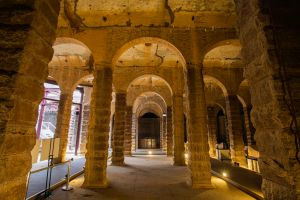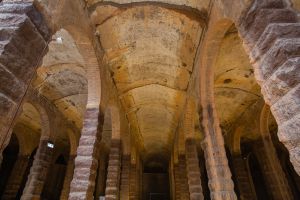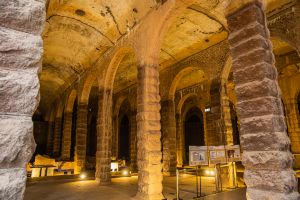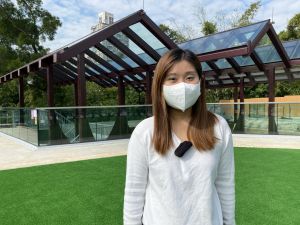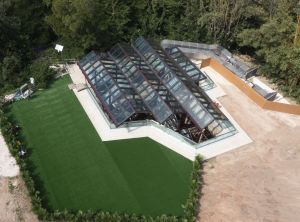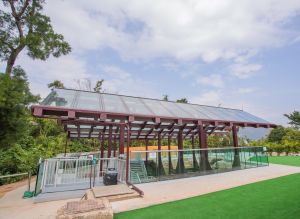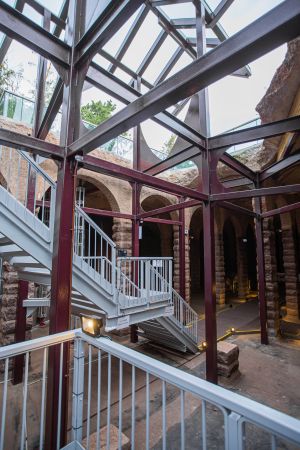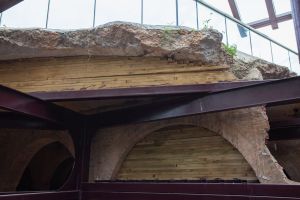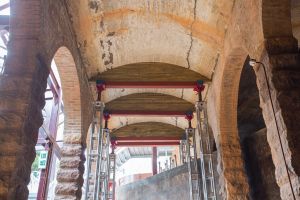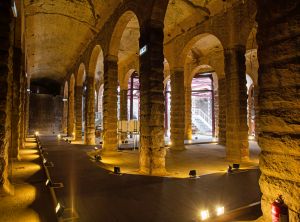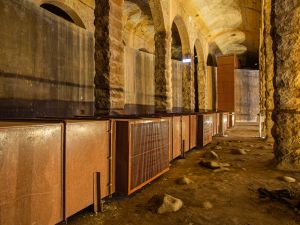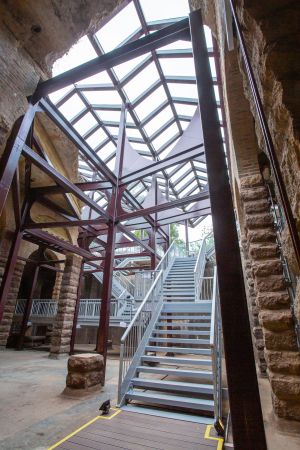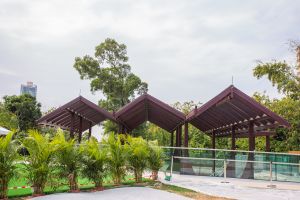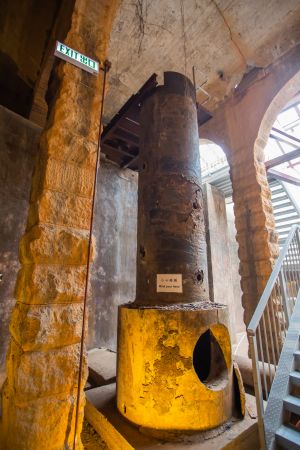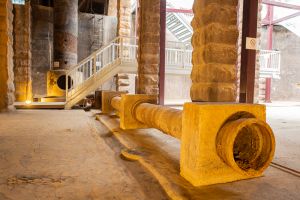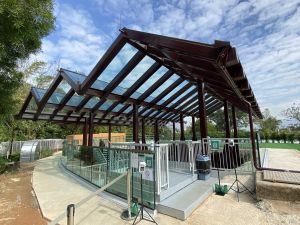Ex-Sham Shui Po Service Reservoir
|
Since late last year, the Ex-Sham Shui Po Service Reservoir (Ex-SSPSR), commonly known as Mission Hill Service Reservoir, has begun to offer restricted opening to the public for their visits. Although the COVID-19 situation has resulted in the service reservoir being temporarily closed to the public and the guided tours suspended, people interested in the service reservoir can still learn more about its history and features by visiting the website of the Water Supplies Department (WSD) for a virtual tour. Recently, I also invited a WSD colleague to share with us the history of this service reservoir which was built more than a hundred years ago. Witnessing the water supply history of the Kowloon Peninsula At its meeting held in June last year, the Antiquities Advisory Board confirmed the Grade 1 status of the Ex-SSPSR. To prepare for the guided tours, colleagues of the WSD have studied a lot of information including plans and drawings about the service reservoir. In the beginning, supply of fresh water for Kowloon Peninsula solely relied on three wells from which well and underground waters were obtained. With the rapid growth in population, the Government initiated in 1902 the Kowloon Waterworks Gravitation Scheme which included the construction of Kowloon Reservoir and catchwaters, and the Ex-SSPSR (also known as Kowloon Tong Service Reservoir back then). The Ex-SSPSR and the Kowloon Reservoir were completed and commissioned in 1904 and 1906 respectively, providing a supply of fresh water to people living in the area of Kowloon Tong, Sham Shui Po and Tai Hang Tung. They also witnessed the shift of water supply for the Kowloon Peninsula from underground water to reservoir water. First circular underground service reservoir built The Ex-SSPSR, which was circular in design, is the first round-shape underground service reservoir locally built. It has a diameter of 150 feet and a water level height of over 20 feet, with a storage capacity of 2.18 million gallons (about 9 900 cubic metres). This service reservoir is tall and large in size when compared to covered brickwork service reservoirs built even earlier. Major repairs were carried out in 1951 to 1952 to rectify a leakage problem. In 1970, the Ex-SSPSR was decommissioned when the Shek Kip Mei Fresh Water Service Reservoir came into operation. The latter reservoir has a massive storage capacity (30 million gallons) which can provide a stable water supply to the large population in the Sham Shui Po area. Construction following the style of Roman civil engineering works Engineer/Kowloon (Headworks) of the WSD, Ms CHENG Hoi-yi, tells us about the numerous features of the service reservoir that are worthy of our appreciation. First is its historic building features. A circular appearance can achieve the greatest area by the shortest perimeter, hence reducing the cost of building the perimeter wall. Its vaulted ceiling, arches and piers are styled to replicate the Roman civil engineering works. The concrete vaulted ceiling is supported by rows of red brick arches and 108 granite pillars. These three structural forms (i.e. circular walls, vaulted ceiling and arches) are very efficient structural design in engineering. Past operation components remain largely intact The second highlight of the service reservoir is that its underground storage was made of three building materials - granite blocks, red bricks and concrete. This combination of materials has not been found in other service reservoirs run by the WSD. Thirdly, important functional components are still kept in the service reservoir, examples include the stilling well, the half-round channel, 12-inch-diameter outlet pipes, inlet pipes and overflow pipes. Temporary strengthening works To ensure the structural stability of the service reservoir, the WSD has carried out a number of temporary strengthening and tidying works in the service reservoir after seeking heritage conservation advice from the Antiquities and Monuments Office. For example, temporary bracing has been installed to support concrete roof slabs that may have risk of dislocation; devices have been installed to monitor the condition of cracks in the vaulted ceiling of the brick arches; ; a glass roof has been installed to protect the exposed part of the service reservoir from weathering and bring in natural light and fresh air. In addition, various improvement works have been carried out for the guided tours, including the provision of internal lighting, ventilation and fire service installations, raised floor pathway, access facilities and ground level greening works at roof cover of the service reservoir. Suspension of guided tours due to the pandemic I am pleased that participants of the guided tour interviewed all found the WSD’s arrangement satisfactory. They agreed that the service reservoir was worth visiting, and commented that they had learnt more about past operation of the WSD and the history of waterworks because of the clear presentation given by the docents. However, in view of the pandemic, the WSD has recently announced the suspension of the guided tours until further notice. The public can still continue to explore the service reservoir’s history and features online through a 360-degree virtual tour run by the WSD. The Development Bureau will conduct studies on the long-term conservation and revitalisation proposals for the service reservoir, so that members of the public can benefit from the use of this place. |
9 January, 2022
Back